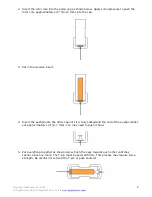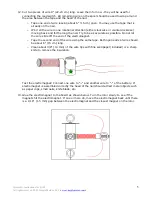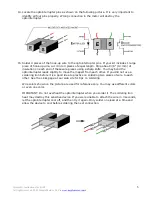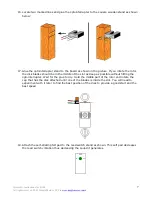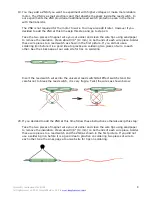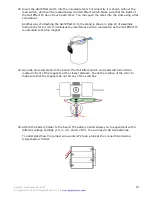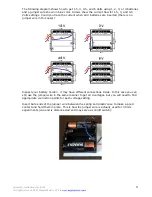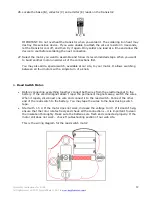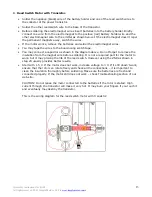
Assembly instructions for kit #8
All rights reserved. 2001 Simple Motors, LLC
♦
♦
15
D. Motor with Optical Control.
•
Solder the resistors together as shown in the picture below, then solder them to the power
transistor. Do not overheat the transistor.
•
Solder the green wire from the optointerrupter (phototransistor emitter) to the connection
of the 4.7K resistor and the base of the transistor.
•
Solder the negative (black) wire from the battery holder to the connection point where the
collector of the transistor connects to both resistors.
•
Solder the black wire from the optointerrupter (LED cathode) to the open end of the 270
Ohm resistor.
•
Twist the ends of white and red wires from the optointerrupter (phototransistor collector
and LED anode) and the positive (red) wire from the battery holder to hold them together
and then solder this connection.
•
Check your connections carefully! Even a brief connection of the optointerrupter wires
directly to the battery may destroy it.
•
Before soldering the electromagnet wires insert batteries into the battery holder. Make sure
that in the starting position one of the blades is inside the optointerrupter slot and does not
allow light from the LED to reach the phototransistor. Briefly connect one electromagnet
wire to the positive (red) battery holder wire and the other electromagnet wire to the
emitter as shown below. If the electromagnet doesn’t repel the permanent magnets away,
switch the wires.
•
If the motor works, remove the batteries and solder the electromagnet wires.
•
You may tape the wires to the board using scotch tape.
•
Start with 3 V. While holding the magnets, slightly rotate the cap with the disk in both
directions to find the best position where the motor starts easily and spins with the fastest
speed. If the motor does not work, increase voltage to 4.5 V. If it doesn’t help, ensure that
the rotor rotates freely and check all the connections – it is important to clean the insulation
thoroughly before soldering. Make sure the batteries are fresh and connected properly. If
the motor still does not work – check Troubleshooting section of our web site.
CAUTION: Do not leave the motor connected to the batteries if the rotor is stalled. High
current through the transistor will make it very hot. It may burn your fingers if you touch it
and eventually may destroy the transistor.


